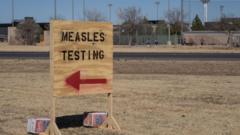Paul Varry's fatal encounter with an SUV has ignited discussions about the balance between cycling growth and road safety in a transforming urban landscape.
**Tragedy on Two Wheels: Paul Varry's Death Sparks Debate on Cycling Safety in Paris**

**Tragedy on Two Wheels: Paul Varry's Death Sparks Debate on Cycling Safety in Paris**
The cycling revolution in Paris faces scrutiny following the tragic death of a young cyclist, revealing the city's urgent need for improved safety measures.
In the wake of a cycling revolution in Paris, the tragic death of 27-year-old Paul Varry has highlighted a looming question about safety for cyclists on the city’s roads. Varry lost his life on October 15, 2024, allegedly struck by an SUV whose driver claims he did not intend to harm the cyclist. Witnesses reported that the driver, after initially reversing, accelerated towards Varry, leading to criminal charges for murder against the motorist.
The rising popularity of cycling in Paris, attributed to substantial investment in infrastructure, saw cycling rates rise from 4% to over 11% of city trips in recent years. Despite the city’s efforts—including €400 million spent on adding more than 1,000 kilometers of bike lanes—many cyclists still navigate streets fraught with danger due to inconsistent infrastructure and aggressive driving behaviors.
Varry's death has become emblematic of the struggle for respect and space between motorists and cyclists in the city. His mother, Nathalie Tison, voiced longstanding fears regarding the dangers of cycling in Paris, attributing aggressive driving to a sense of entitlement among some motorists. In a call for more secure cycling pathways, she believes her son's legacy should serve as motivation for change.
While advocates for cycling also express hope for continued advancements, they acknowledge that the road ahead requires further safety measures and regulatory adaptations to counter mountings tensions. Public officials, like Rémi Féraud, the socialist senator, advocate for a balance where spaces for bicycles and cars coexist, while others argue that the car-reduction measures have negatively impacted motorists, especially those from the suburbs.
Motorist groups emphasize that driving in Paris encounters challenges that are often disregarded, with one member describing the experience as "hell." The cycling-friendly drive among city leaders contrasts sharply with the sentiments of those who feel marginalized by newfound regulations. The death of Varry, albeit a tragic incident, underscores the need for an ongoing dialogue about urban transport and the importance of both cyclist and motorist safety.
As Paris continues its transition towards becoming more cycling-friendly amid the European Union’s push for reduced transport emissions, Varry's story is a grim reminder of the need for cohesive infrastructure and a commitment to preserving lives on the roads. The upcoming trial of his alleged killer is poised for considerable societal reflection, with questions about societal priorities taking center stage as two disrupted families face each other amid the fallout.
The rising popularity of cycling in Paris, attributed to substantial investment in infrastructure, saw cycling rates rise from 4% to over 11% of city trips in recent years. Despite the city’s efforts—including €400 million spent on adding more than 1,000 kilometers of bike lanes—many cyclists still navigate streets fraught with danger due to inconsistent infrastructure and aggressive driving behaviors.
Varry's death has become emblematic of the struggle for respect and space between motorists and cyclists in the city. His mother, Nathalie Tison, voiced longstanding fears regarding the dangers of cycling in Paris, attributing aggressive driving to a sense of entitlement among some motorists. In a call for more secure cycling pathways, she believes her son's legacy should serve as motivation for change.
While advocates for cycling also express hope for continued advancements, they acknowledge that the road ahead requires further safety measures and regulatory adaptations to counter mountings tensions. Public officials, like Rémi Féraud, the socialist senator, advocate for a balance where spaces for bicycles and cars coexist, while others argue that the car-reduction measures have negatively impacted motorists, especially those from the suburbs.
Motorist groups emphasize that driving in Paris encounters challenges that are often disregarded, with one member describing the experience as "hell." The cycling-friendly drive among city leaders contrasts sharply with the sentiments of those who feel marginalized by newfound regulations. The death of Varry, albeit a tragic incident, underscores the need for an ongoing dialogue about urban transport and the importance of both cyclist and motorist safety.
As Paris continues its transition towards becoming more cycling-friendly amid the European Union’s push for reduced transport emissions, Varry's story is a grim reminder of the need for cohesive infrastructure and a commitment to preserving lives on the roads. The upcoming trial of his alleged killer is poised for considerable societal reflection, with questions about societal priorities taking center stage as two disrupted families face each other amid the fallout.




















